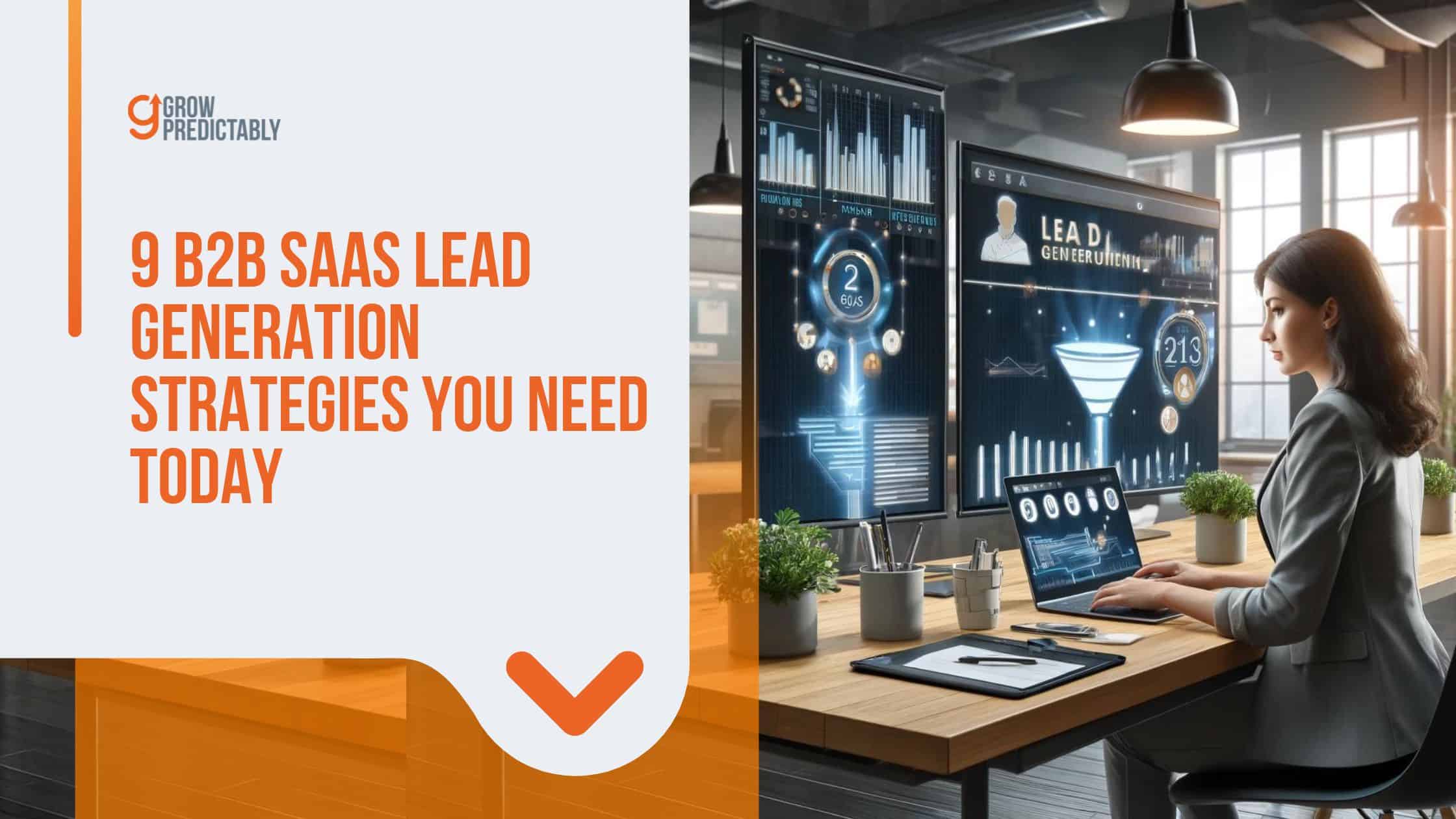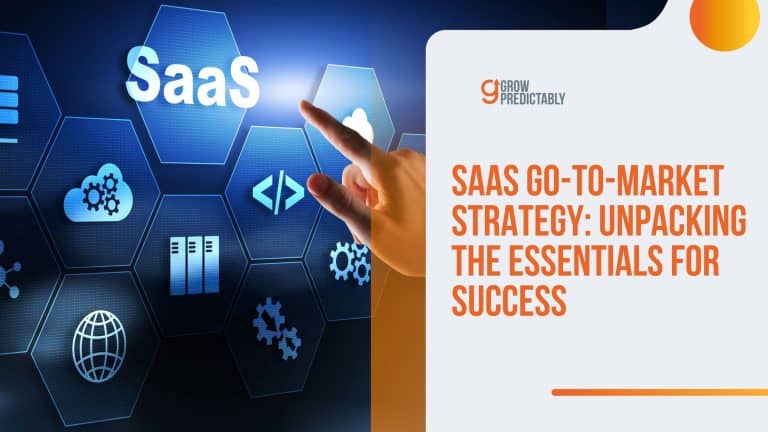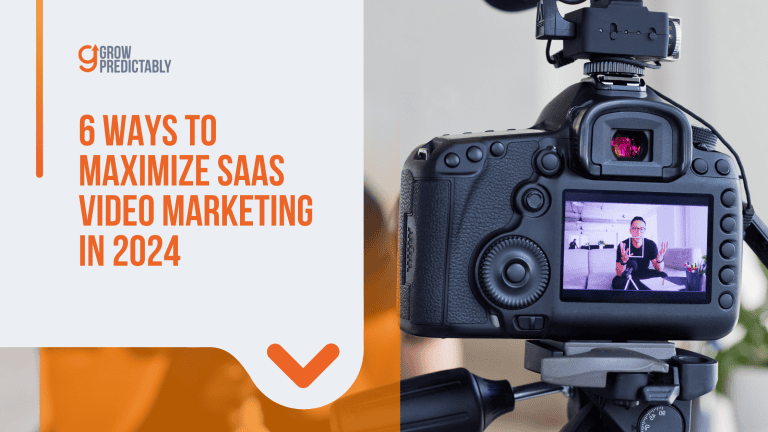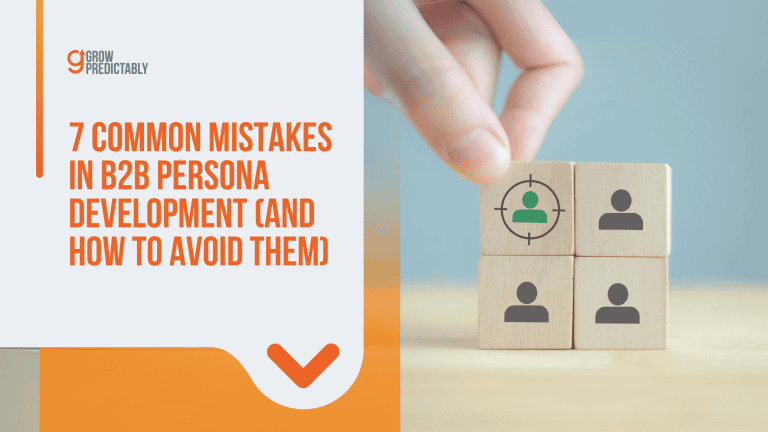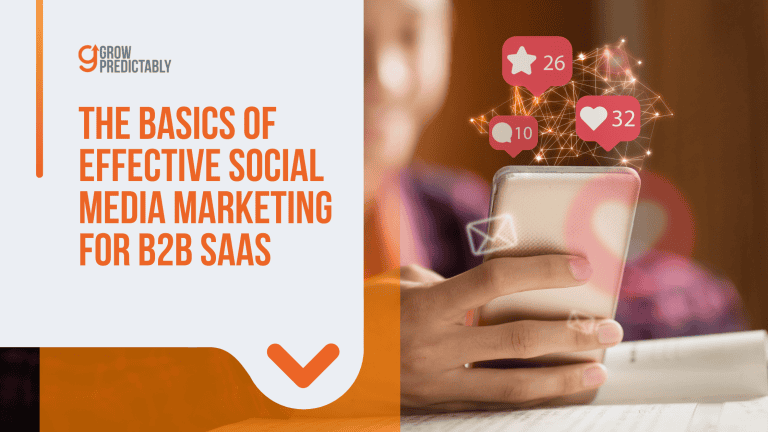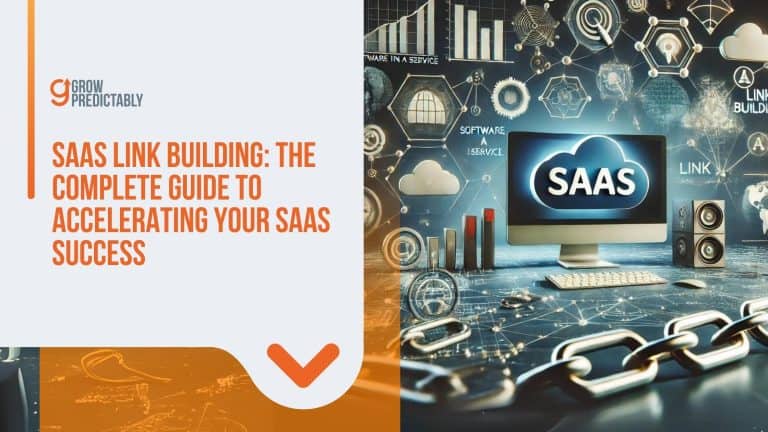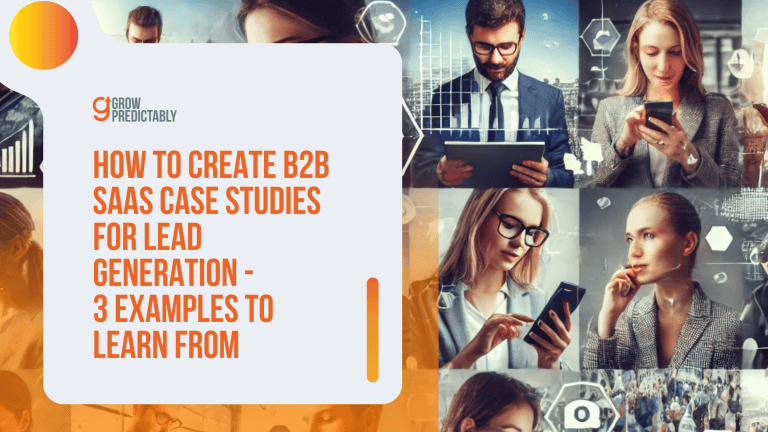9 B2B SaaS Lead Generation Strategies You Need Today
Are you finding it tough to get enough high-quality leads for your B2B SaaS business?
Do long sales cycles and hitting the right decision-makers feel like never-ending headaches?
Trust me, you’re not alone.
A lot of B2B SaaS marketers are in the same boat.
To put things in perspective, 63% of marketers say their biggest hurdle is generating traffic and leads.
But here’s the silver lining: Understanding B2B SaaS lead generation can flip your challenges into golden opportunities.
Mastering this can boost your website traffic, pump up your conversion rates, and help you build a solid pipeline of potential customers.
All this leads to what you really want—driving revenue and growing your business.
Ready to turn things around?
Keep reading to discover the secrets to B2B SaaS lead generation and take your business to the next level.
Let’s get you the results you deserve!
What is B2B SaaS Lead Generation?
It is all about sparking interest in your software among other businesses.
Think of it like waving a flag that says, “Hey, we have a tool that can solve your problems!”
The idea is to get other businesses to notice you and eventually become paying customers.
If you’re in B2B SaaS, lead generation is your bread and butter.
1. Know Your Target Market
Start with the basics: who’s your ideal customer?
You might think, “I’ve got this,” but it’s worth another look.
Narrow it down.
Here’s where the Customer Avatar Canvas comes into play.
This tool helps you build a detailed profile of your ideal customer.
We’re talking demographics, psychographics, and even their specific needs.
Why it’s important: Understanding your customer’s preferences and pain points enables targeted marketing that speaks their language.
It makes your solution feel tailor-made.
How it works: The Customer Avatar Canvas incorporates a unique ‘Before/After’ step.
This offers a deep understanding of the customer’s transformation when using your product or service.
Go beyond surface-level details.
Dig into what your customers’ day-to-day looks like, what challenges they face, and how your solution can transform their experience.
The more you know, the better you can serve them.
And the better you serve them, the more loyal they’ll become.
2. Define Your Product & Value Proposition
You’ve got a solid product, but do your prospects get why it’s great for them?
This is where your value proposition shines.
Explain why your software is unique and, more importantly, why it solves their problems better than anything else out there.
Focus on benefits, not features.
Saying “cut down workflow inefficiencies” resonates more than “user-friendly interface,” right?
3. Optimize Your Pricing Model
Pricing can be tricky.
You might be wondering, “Freemium or straight pricing tiers?”
Your pricing needs to reflect the value your product provides while staying competitive.
Consider offering a free trial to get them hooked.
Once they see the value, they’re more likely to invest.
Just make sure your pricing is clear and justifiable.
4. Choose the Right Customer Acquisition Channels
Reach is crucial.
You might have the best product, but it won’t matter if no one knows about it.
Whether it’s social media, content marketing, paid ads, or email campaigns, your channels need to match where your target audience hangs out.
Here’s a crucial point: don’t fall into the trap of half-built bridges!
It’s all about avoiding the common pitfall of starting multiple strategies and not finishing them.
Sound familiar?
It’s easy to dabble in every channel, but without commitment, you’ll stretch your resources thin and achieve mediocre results.
Why it’s important: Completing what you start makes your marketing efforts more effective.
Fully executed strategies lead to success and avoid wasting valuable resources.
How to implement: Focus on a few key channels.
Commit to mastering them before jumping to something new.
This ensures that each strategy has the chance to flourish and show real results.
Don’t skimp on the personal touch—people like to do business with companies that feel human.
Whether it’s a customized email or an interactive social media post, ensure your audience feels valued.
Why Should You Care?
Why should you care about B2B SaaS lead generation?
Can’t you just rely on word-of-mouth or some paid advertising to get customers?
Sure, you could, but you might miss out on many opportunities that effective SaaS lead generation could offer.

Here’s why jumping into SaaS lead generation matters.
1. Keeps Your Sales Pipeline Flowing
Think of your sales pipeline as a water hose.
If you don’t have a steady flow of water (sales qualified leads), it dries up.
B2B SaaS lead generation ensures new potential customers keep flowing into your pipeline.
By implementing a solid lead generation strategy, more leads mean more chances to turn prospects into paying customers.
Simple, right?
2. Targeted Approach Means Quality Leads
- Not all leads are the same.
By focusing on B2B SaaS lead generation, you’re targeting businesses that need and can benefit from your software.
This tailored approach is way better than targeting everyone.
Quality marketing qualified leads or sales qualified leads are more likely to convert, saving you time and boosting your return on investment.
3. Builds Lasting Relationships
Lead generation isn’t just about quick wins.
It’s about creating ongoing relationships with potential customers.
You build trust and rapport through personalized emails, webinars, or demos aimed at your target market.
When these qualified leads are ready to decide, your software will be at the forefront of their minds.
4. Data-Driven Decisions
With B2B SaaS lead generation, you gather valuable data on your prospects.
This data enables the development of effective lead generation strategies.
This info helps you to improve your SaaS marketing strategies and make decisions that inevitably lead to growth.
You’ll know what kind of content works, which channels are most effective, and how to improve.
5. Scalable Growth
The biggest win?
Scalability.
Effective SaaS lead generation efforts let your SaaS company grow systematically and sustainably.
You’re not just hoping for the best—you’re reaching out and pulling in the best-fit prospects through your lead generation processes.
This strategic growth can scale up as your company expands, creating a reliable path to long-term success.
Lead Generation Strategies You Need Today
Ready to take on your SaaS lead generation efforts like a pro?
Here are nine strategies to get you started.

1. Turn Your Website Into a Lead Magnet
Your website has to work its magic from the get-go.
It’s the frontline of your digital presence, and when it comes to snagging B2B SaaS leads, it’s got a heavy-lifting job that can’t be taken lightly in your lead generation strategy.
Design is not just what it looks like and feels like. Design is how it works.
Steve Jobs
47% of consumers expect a page to load in two seconds or less.
That’s almost half of your visitors potentially bouncing if your site is too slow.
You don’t want that.
Essentially, if your site is a well-oiled machine, you’re setting up a stage that’s welcoming and reflects your knack for solving complex software needs through a strategic lead generation process.
So, here’s the scoop on making your site a lead-capturing hero:
- Speed Up Your Loading Time: Use tools like Google PageSpeed Insights. They’ll help you identify the culprits slowing you down and offer tips to get faster.
- Clarify Your Messaging: Ensure your headlines and calls to action are clear and compelling. Visitors should instantly get what you do and why it’s valuable to them.
- Improve Navigation: Keep your menu straightforward. If visitors can’t find what they need quickly, they’ll leave. Simple as that.
- Mobile Optimization: Your site must look and function great on mobile devices. With so many people browsing on phones, this isn’t optional.
2. Leverage Social Media Like a Pro
You’ve probably heard it a million times – “social media is where it’s at.”
But guess what?
When it comes to B2B SaaS lead generation, this old adage holds more truth than ever.
Social media isn’t just about cat videos and memes; it’s a goldmine for connecting with your target audience and driving traffic to your offerings with an effective lead generation strategy.
83% of B2B marketers use social media to expand their brand presence and reach.
It’s a bustling marketplace where your next big lead could be waiting to find a solution exactly like the one you offer.
An effective lead generation process can maximize these opportunities.
So, how do you unlock the potential of social media for lead generation success?
Follow these steps:
- Identify Your Platforms: Not all social media is created equal, especially in the B2B realm. LinkedIn, Twitter, and industry-specific forums are your best bets. Choose wisely based on where your target audience hangs out.
- Create Valuable Content: Sharing insightful, engaging content that answers common questions or solves problems can establish you as a leader in your field. Plus, it gives people a reason to follow and engage with you.
- Engage Actively: Don’t be that person who posts and ghosts. Respond to comments, join discussions, and be a part of the community. The more active and engaged you are, the more leads will trust and remember your brand.
- Run Targeted Ads: With a bit of investment, social media ads can put your SaaS solution in front of the exact audience you’re looking for, thanks to powerful targeting options.
3. Craft Blogs That Connect and Convert
Here, you’re not just hitting “publish” on another blog post.
You’re opening the doors to a conversation, engaging directly with those who need your insights the most through highly effective lead generation efforts.
It’s about creating content that resonates, addressing pain points, sharing successes, and showcasing your thought leadership.
Content is fire, social media is gasoline.
Jay Baer
B2B marketers who blog generate 67% more leads than those who don’t.
This is your guide to where treasure waits — quality content that fuels your lead generation process.
Here are your actionable steps:
- Know Your Audience Inside-Out: Start with understanding the challenges your audience faces. This knowledge helps you create content that speaks to their heart and mind.
- Bring Value With Every Post: Give your readers the golden nuggets of wisdom they crave. Educational, insightful content can position you as the go-to for industry know-how and enhance your lead generation strategy.
- Optimize for Search Engines: Get to grips with SEO best practices. Use relevant keywords and phrases so your blog is the first thing potential leads see when they’re hunting for solutions on search engines.
- Promote Like a Champ: Share your blog posts across your social media platforms and in your email newsletters. Get the word out, and let the traffic roll in.
4. Unlock the Full Potential of Your Inbox
Think of your email list as a goldmine of untapped potential.
It’s direct and personal, and when done right, it delivers results straight to your virtual door.
In the world of B2B SaaS, emails are like trusty messengers, carrying your bespoke solutions to the right people at the right time.
It’s all about hitting that sweet spot between professional and personable.
A report from Content Marketing Institute states that 87% of B2B marketers distribute their content through email channels, contributing to robust lead generation efforts.
That’s because email marketing has the credentials to bolster your lead gen efforts and turn introductions into transactions, contributing to your overall lead generation strategy.
Ready to harness the power of email marketing?
Let’s break it down:
- Grow a Healthy List: Start by building a list of subscribers genuinely interested in what you have to offer. Use opt-ins on your website with incentives that add value, like whitepapers, webinars, or free trials.
- Segment and Personalize: Not all leads are the same. Segment your list to ensure that the content you send is relevant to each group’s needs. Personalization goes beyond “Dear [Name]”; it’s about tailoring the message to their journey and pain points.
- Craft Captivating Content: Write subject lines that beg to be clicked and body content that holds the reader’s attention to the end. Keep it concise, keep it compelling, and always aim for clarity.
- Test, Measure, Iterate: Use A/B testing for your subject lines, calls to action, and send times to see what strikes a chord. Analyze the results and refine your approach for continuous improvement.
5. Flex Your Website’s Muscle with A/B Testing
Imagine you’ve got two buttons on your website.
One’s red, one’s blue.
Which one gets more clicks and drives more leads in your lead generation process?
That’s where A/B testing comes into play.
It’s like a science experiment for your site, where you compare two versions of a page to see which performs better.
The most important thing in communication is to hear what isn’t being said.
Peter Drucker
In the B2B SaaS world, a small change can make a big impact on your conversion rates.
According to Optimizely, A/B testing can improve content engagement and conversions and more.
It’s your secret weapon in fine-tuning your lead generation machine.
So, how do you get started?
- Identify Key Pages: Pinpoint which pages you want to test — usually, it’s the ones with the highest traffic or those pivotal to your conversion process.
- Set Clear Goals: Decide what success looks like. Is it more sign-ups? More demo requests? Nail down your targets, so you know exactly what you’re aiming for.
- Create Variations: Develop the B version of your A page (the control). Change one element at a time — like headlines, images, or call-to-action buttons — to keep the test clean.
- Run the Test: Tools like Google Optimize or Optimizely can help you serve up the different page versions to visitors randomly and track the results.
6. Elevate Your Game with High-Impact Content Campaigns
Content is king, right?
In the B2B SaaS world, that’s more than just a catchy phrase—it’s the currency that buys you attention and trust in a crowded marketplace, fueling your lead generation strategy.
A beefy content campaign is your chance to dish out value, showcase your thought leadership, and capture those leads who are hungry for what you’re serving.
Market your innovations not just with facts but with stories that stick.
Here’s something to chew on: Content marketing generates over three times as many leads as outbound marketing and costs 62% less.
Here’s how you can get the ball rolling:
- Map Out Your Campaign Goals: Determine what you want to achieve. Are you aiming to raise brand awareness, drive traffic, or convert free users to paid ones?
- Know Your Audience Inside Out: Create content that speaks directly to your buyer personas. What are their pain points, and how does your SaaS solution make their lives easier? Incorporate qualified leads to ensure you are targeting the right prospects.
- Create Compelling Content: Whether it’s blog posts, e-books, videos, or infographics, make sure it packs a punch and provides real value.
- Promote Across Channels: Don’t just create, circulate. Use social media, email newsletters, and your sales team to get your content in front of the right eye.
7. Reach the Right Eyes with Targeted Online Advertising
With targeted online advertising, you can use the powerful magnet of digital precision to attract precisely the leads you’re after, enhancing your lead generation process.
It’s all about connecting with decision-makers actively seeking solutions like yours, which boosts your chances of landing a fruitful engagement.
Google only loves you when everyone else loves you first.
Wendy Piersall
Businesses that leverage targeted advertising report a 41% increase in revenue—a stat hard to ignore.
How to master targeted online advertising:
- Zero In On Your Ideal Customer: Imagine who your perfect client is. What are their business needs, where do they hang out online, and what kind of content do they consume? Knowing this helps tailor your ads to resonate.
- Pick the Perfect Platform: Not every online platform is suited for B2B advertising. Choose platforms known for business networking, like LinkedIn, where you can catch more B2B eyeballs.
- Craft Captivating Ads: Create ads that speak directly to your audience’s pains and gains. Highlight how your SaaS solution makes their life easier, and always include a compelling call to action.
- Optimize Through Testing: Launch with a few different ad variants to see what sticks. Monitor performance metrics like click-through rates and conversions, and tweak your ads based on what the data tells you.
8. Engage and Delight with Interactive Content
If you’re looking to capture your audience’s attention and keep it, interactive content is the way to go.
It’s not just about grabbing eyes— it’s about engagement.
Research shows that interactive content generates twice the conversions compared to static content.
It brings prospects directly into the experience, helping them see firsthand how your SaaS solution can meet their needs in your lead generation efforts.
Here’s how you can get ahead with interactive content:
- Identify Your Audience’s Pain Points: Know what challenges your prospects are facing so you can create content that addresses them.
- Choose the Right Format: Depending on your goals, you could use quizzes, calculators, polls, or interactive infographics.
- Design with Engagement in Mind: Make your content visually appealing and ensure it prompts interaction.
- Integrate Lead Capture Forms: Use forms strategically within your content to capture lead information without disrupting the user experience.
9. Connect and Convert with Webinars and Live Events
Ready to turn curious prospects into loyal customers?
Webinars and live events are your secret weapon in crafting an effective lead generation strategy.
They give you a platform to share expert insights, tackle pain points, and showcase how your SaaS product can be the solution your audience is searching for.
Marketing is all about creating a sense of desire.
David Ogilvy
According to a recent survey, 73% of B2B marketers say webinars are the best way to generate high-quality leads.
Steps to host a winning webinar or live event:
- Define Your Goal: Be clear on what you aim to achieve—lead generation, product demo, or educational content.
- Choose Your Topic: Pick a subject that addresses your audience’s pain points and aligns with your product’s strengths.
- Promote Your Event: Use email marketing, social media, and partnerships to spread the word.
- Engage During the Event: Use Q&A sessions, polls, and interactive elements to keep your audience involved.
- Follow Up: Send a thank-you email, share the recording, and include a strong call-to-action to convert leads into customers.
Measuring Your Lead Generation Efforts
Knowing which metrics to follow is like having a roadmap for your lead generation strategy.

Here are the key metrics you need to track to take your lead generation campaigns to the next level.
1. Lead Volume
How Many Leads Are You Generating?
Start by measuring the total number of leads coming in.
This gives you a clear picture of your SaaS lead generation efforts.
Track your lead volume on a weekly or monthly basis.
Are you seeing consistent growth, or are there sudden drops?
Spotting these trends early helps you tweak your tactics promptly.
2. Conversion Rate
Are Your Leads Turning Into Customers?
Your conversion rate is crucial—it’s the percentage of sales or marketing qualified leads who move from ‘interested’ to ‘paying customer.’
Calculate it by dividing the number of new customers by the number of leads and multiplying by 100.
A low conversion rate might suggest a need to refine your sales funnel or improve follow-up communication.
Testing different approaches will help you discover what clicks with your target audience.
3. Cost Per Lead (CPL)
What’s the Price Tag on Each Lead?
Knowing your Cost Per Lead (CPL) keeps your budget in check.
Calculate CPL by dividing your marketing and sales expenses by the number of leads generated.
If you’re spending more than you’re comfortable with, look into optimizing your campaigns or reallocating your budget to more cost-effective channels.
Keep an eye on CPL to ensure you’re not overpaying for leads that don’t convert.
4. Lead Source Effectiveness
Which Channels Are Bringing in Quality Leads?
As mentioned before, not all leads are equal, and the source can make all the difference.
Track where your leads come from—social media, email marketing, search engines, etc.
Then, assess which channels are not only generating leads but also bringing in high-quality prospects.
Doing this lets you focus your efforts and budget on the best sources for you.
5. Lead-to-Customer Rate
What’s the Journey From Lead to Customer?
This metric walks you through the percentage of leads that move through your entire sales funnel and convert into customers.
To calculate, divide the number of converted leads by the total number of leads and multiply by 100.
Monitoring this helps you identify flaws in your funnel, whether it’s an initial outreach issue or something needing attention further down the line.
6. Engagement Metrics
How Engaged Are Your Leads?
Engagement metrics like email open rates, click-through rates, and time spent on your website provide insight into how interested and involved potential customers are.
If you notice high engagement, it often indicates a high intent to purchase.
These metrics are valuable for determining which leads to prioritize and nurture first.
7. Lifetime Value of a Customer (LTV)
Are Your Leads Worth It In The Long Run?
Lastly, keep an eye on the lifetime value of your customers (LTV).
This metric tells you how much revenue a customer brings over their entire relationship with your company.
To calculate LTV, multiply the average purchase value by the number of purchases per year and then by the average customer lifespan.
If your LTV significantly exceeds your CPL, you’re set to achieve sustainable growth.
Top 5 Tools for B2B SaaS Lead Generation
Curious about which tools can help you achieve B2B SaaS lead generation success?
Here are our top five picks:
1. HubSpot
HubSpot is an all-in-one CRM platform designed for seamless integration of sales, marketing, and customer service.
It’s highly regarded for its robust features and user-friendly interface, making it popular among businesses of all sizes.

Why We Recommend this Tool?
HubSpot isn’t just a tool; it’s an entire ecosystem that simplifies your workflow.
It offers everything from email marketing to social media management.
Plus, it integrates smoothly with other platforms you might be using.
How Can this Tool Help Your Business?
- Streamlines inbound marketing campaigns
- Automates repetitive tasks, freeing up your time
- Provides in-depth analytics to track lead performance
2. LinkedIn Sales Navigator
LinkedIn Sales Navigator leverages LinkedIn’s extensive network to help you find and engage potential leads.
It’s tailor-made for sales professionals looking to identify key decision-makers within organizations.
Why We Recommend This Tool?
LinkedIn Sales Navigator is excellent for prospecting with its advanced search features.
It uses LinkedIn’s vast data to help you zero in on the right contacts.
You’ll stay updated on leads and accounts in real-time.
How Can this Tool Help Your Business?
- Advanced search filters to find ideal leads
- Real-time updates on leads and accounts
- Integration with CRM for seamless workflow
3. Clearbit
Clearbit focuses on enriching your lead data, offering real-time intelligence on prospective customers.
Its powerful data API allows you to enhance the quality of your lead database effortlessly.

Why We Recommend This Tool?
Clearbit ensures that your lead data is always actionable and up to date.
This means better targeting and more personalized outreach.
The tool helps you identify key decision-makers efficiently.
How this Tool Helps Businesses
- Real-time data enrichment of leads
- Identifies key decision-makers within target companies
- Enhances personalization in marketing campaigns
4. Intercom
Intercom is a customer messaging platform that uses live chat, bots, and in-app messaging to engage visitors in real time.
It’s an excellent tool for guiding prospects through your sales funnel at the right moments.
Why We Recommend This Tool?
Intercom bridges the gap between customer support and your SaaS lead generation process.
It allows for real-time engagement, capturing leads when they’re most interested.
Automated follow-ups keep the conversation alive.
How Can this Tool Help Your Business?
- Real-time chat to engage and qualify leads immediately
- Lead routing to the relevant sales rep
- Automated follow-ups to keep the conversation going
5. ZoomInfo
ZoomInfo provides a comprehensive B2B contact database with detailed insights into companies and key decision-makers.
It’s widely favored by sales teams for its depth and data accuracy.

Why We Recommend This Tool?
ZoomInfo stands out for its detailed and updated database.
The advanced search and filtering options make identifying and qualifying leads a breeze.
You’ll always have the freshest data at your fingertips.
How Can this Tool Help Your Business?
- Extensive contact and company database
- Advanced search and filtering options
- Real-time updates to keep your data fresh
Common Challenges in B2B SaaS Lead Generation and How to Overcome Them
Even the most well-planned B2B SaaS lead generation strategies can face roadblocks.
Here are some common challenges and how you can overcome them:
1. Finding Your Ideal Target Audience
The Challenge:
Targeting everyone means reaching no one.
Misaligned targeting wastes time and resources.
You need to pinpoint who really needs your product.
How to Overcome It:
Start by defining your Ideal Customer Profile (ICP).
Use tools like LinkedIn Sales Navigator to zero in on decision-makers at target companies.
Tailor your marketing messages to address their specific pain points.
This way, your outreach is laser-focused and more likely to convert.
2. Quality Over Quantity in SaaS Lead Generation
The Challenge:
A flood of leads isn’t helpful if they aren’t qualified.
High volume without quality leads to inefficiencies.
What you need are leads that have genuine potential.
How to Overcome It:
Utilize data enrichment tools like Clearbit to fine-tune your leads.
Implement lead scoring to prioritize those most likely to convert.
Plus, consider offering gated content like eBooks or webinars to attract genuinely interested prospects.
3. Keeping Leads Engaged
The Challenge:
Leads can go cold fast if not nurtured properly.
Maintaining interest over time is tough.
You need a strategy to keep them hooked.
How to Overcome It:
Develop a nurturing strategy using personalized email sequences with platforms like HubSpot.
Engage leads in real-time with tools like Intercom for chat or in-app messaging.
Timely follow-ups and valuable content keep your leads warm and moving forward.
4. Measuring ROI
The Challenge:
Evaluating the ROI of your SaaS lead generation can get tricky with multiple channels and touchpoints.
You need clear metrics to guide your strategy.
Without this, you’re flying blind.
How to Overcome It:
Integrate your lead generation efforts with a robust CRM like HubSpot.
Define clear KPIs and use analytics to track campaign effectiveness.
Data-driven insights will guide your decisions and highlight what to adjust.
5. Tackling Long Sales Cycles
The Challenge:
B2B SaaS sales cycles can drag on, requiring patience and persistence.
This can stretch your resources thin.
You need to keep the momentum going!
How to Overcome It:
Break the sales process into manageable stages with clear objectives for each.
Use a CRM to track where each lead is and automate touchpoints for consistent communication.
Regular updates, case studies, and success stories can keep prospects engaged and closer to a decision.
FAQs
Get Ready to Supercharge Your B2B SaaS Leads
There’s a lot at stake when it comes to B2B SaaS lead generation.
The right strategy can mean the difference between hitting your targets and falling short.
By leveraging the tips we’ve discussed, you’ll be better positioned to attract high-quality leads and turn them into loyal customers.
Remember, the key is to stay focused on your customer’s needs, continually refine your approach, and measure your success.
Now, it’s time to put these insights into action and watch your leads grow.
For more insights and strategies, dive into our other blogs on digital marketing, business, and mindset.
There’s a wealth of knowledge waiting to help you achieve even greater results!

